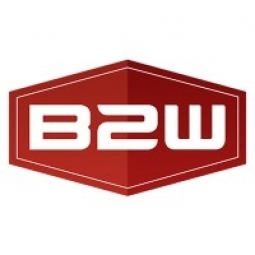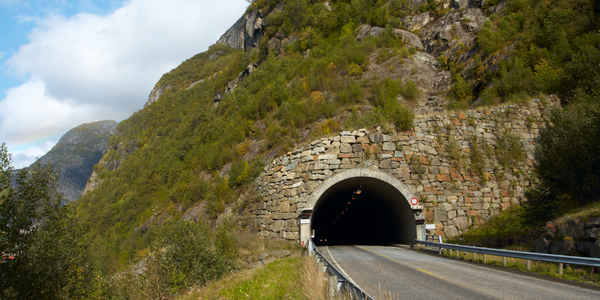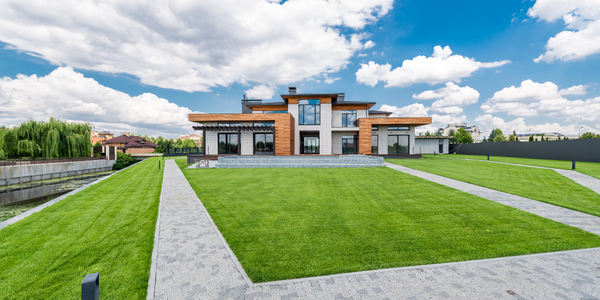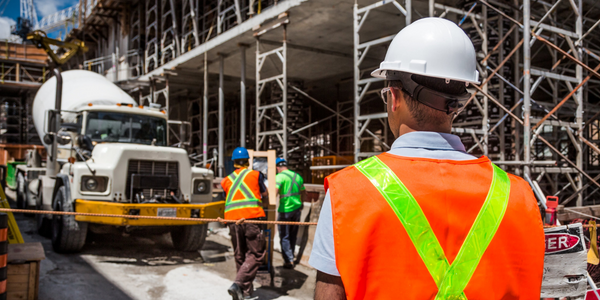Barriere Construction: Heavy Civil Contractor Replacing Paper Forms, Capturing Better Data in Real Time & Using It to Optimize Operations

公司规模
Mid-size Company
地区
- America
国家
- United States
产品
- B2W Inform
- B2W Software ONE Platform
技术栈
- Cloud-based system
- Data capture and analysis
实施规模
- Enterprise-wide Deployment
影响指标
- Productivity Improvements
- Digital Expertise
技术
- 平台即服务 (PaaS) - 数据管理平台
- 分析与建模 - 实时分析
适用行业
- 建筑与基础设施
适用功能
- 维护
- 现场服务
用例
- 实时定位系统 (RTLS)
- 远程资产管理
服务
- 云规划/设计/实施服务
- 数据科学服务
关于客户
Barriere Construction is a fourth-generation family-owned contractor based in Metairie, Louisiana. The company relies on nearly 500 employees to complete paving, heavy civil, and industrial construction projects for public and private customers across Louisiana and Mississippi. Barriere Construction is committed to leveraging technology to improve its operations, and it uses the B2W Software ONE Platform for a unified approach to managing estimating, field operations, equipment maintenance, and business intelligence. The company is known for its aggressive equipment auditing and inspection program, which helps its maintenance team keep equipment on the job earning money.
挑战
Barriere Construction, a fourth-generation family-owned contractor, was struggling with inefficient paper-based processes for data collection and analysis. The company, which employs nearly 500 people to complete paving, heavy civil, and industrial construction projects across Louisiana and Mississippi, was finding it difficult to collect data effectively in the field and access it in real time across the enterprise. The long, labor-intensive path between paper forms and actionable intelligence was hindering the company's ability to make informed business decisions. The company was also struggling with an aggressive equipment auditing and inspection program that was paper-based, causing delays in identifying and correcting problems.
解决方案
Barriere Construction adopted the B2W Inform solution for data capture and analysis. B2W Inform allows Barriere to generate customized electronic form templates quickly and easily. The cloud-based system enables employees to access and complete the exact forms they need anytime, anywhere, and on any device. Once a form is submitted, the data becomes accessible enterprise-wide in real time, bypassing the long, labor-intensive path between paper forms and actionable intelligence. Barriere has used B2W Inform to take its aggressive equipment auditing and inspection program paperless, closing the gap between the field and the office as well as the gap between identifying a problem and correcting it. The company has also adopted B2W Inform for its safety program, replacing paper forms for Monday morning toolbox talks that were previously mailed to foremen.
运营影响
数量效益

Case Study missing?
Start adding your own!
Register with your work email and create a new case study profile for your business.
相关案例.

Case Study
IoT System for Tunnel Construction
The Zenitaka Corporation ('Zenitaka') has two major business areas: its architectural business focuses on structures such as government buildings, office buildings, and commercial facilities, while its civil engineering business is targeted at structures such as tunnels, bridges and dams. Within these areas, there presented two issues that have always persisted in regard to the construction of mountain tunnels. These issues are 'improving safety" and "reducing energy consumption". Mountain tunnels construction requires a massive amount of electricity. This is because there are many kinds of electrical equipment being used day and night, including construction machinery, construction lighting, and ventilating fan. Despite this, the amount of power consumption is generally not tightly managed. In many cases, the exact amount of power consumption is only ascertained when the bill from the power company becomes available. Sometimes, corporations install demand-monitoring equipment to help curb the maximum power demanded. However, even in these cases, the devices only allow the total volume of power consumption to be ascertained, or they may issue warnings to prevent the contracted volume of power from being exceeded. In order to tackle the issue of reducing power consumption, it was first necessary to obtain an accurate breakdown of how much power was being used in each particular area. In other words, we needed to be able to visualize the amount of power being consumed. Safety, was also not being managed very rigorously. Even now, tunnel construction sites often use a 'name label' system for managing entry into the work site. Specifically, red labels with white reverse sides that bear the workers' names on both sides are displayed at the tunnel work site entrance. The workers themselves then flip the name label to the appropriate side when entering or exiting from the work site to indicate whether or not they are working inside the tunnel at any given time. If a worker forgets to flip his or her name label when entering or exiting from the tunnel, management cannot be performed effectively. In order to tackle the challenges mentioned above, Zenitaka decided to build a system that could improve the safety of tunnel construction as well as reduce the amount of power consumed. In other words, this new system would facilitate a clear picture of which workers were working in each location at the mountain tunnel construction site, as well as which processes were being carried out at those respective locations at any given time. The system would maintain the safety of all workers while also carefully controlling the electrical equipment to reduce unnecessary power consumption. Having decided on the concept, our next concern was whether there existed any kind of robust hardware that would not break down at the construction work site, that could move freely in response to changes in the working environment, and that could accurately detect workers and vehicles using radio frequency identification (RFID). Given that this system would involve many components that were new to Zenitaka, we decided to enlist the cooperation of E.I.Sol Co., Ltd. ('E.I.Sol') as our joint development partner, as they had provided us with a highly practical proposal.

Case Study
Splunk Partnership Ties Together Big Data & IoT Services
Splunk was faced with the need to meet emerging customer demands for interfacing IoT projects to its suite of services. The company required an IoT partner that would be able to easily and quickly integrate with its Splunk Enterprise platform, rather than allocating development resources and time to building out an IoT interface and application platform.

Case Study
Bridge monitoring in Hamburg Port
Kattwyk Bridge is used for both rail and road transport, and it has played an important role in the Port of Hamburg since 1973. However, the increasing pressure from traffic requires a monitoring solution. The goal of the project is to assess in real-time the bridge's status and dynamic responses to traffic and lift processes.

Case Study
Bellas Landscaping
Leading landscaping firm serving central Illinois streamlines operations with Samsara’s real-time fleet tracking solution: • 30+ vehicle fleet includes International Terrastar dump trucks and flatbeds, medium- and light-duty pickups from Ford and Chevrolet. Winter fleet includes of snow plows and salters.

Case Study
Condition Based Monitoring for Industrial Systems
A large construction aggregate plant operates 10 high horsepower Secondary Crusher Drive Motors and associated conveyor belts, producing 600 tons of product per hour. All heavy equipment requires maintenance, but the aggregate producer’s costs were greatly magnified any time that the necessary maintenance was unplanned and unscheduled. The product must be supplied to the customers on a tight time schedule to fulfill contracts, avoid penalties, and prevent the loss of future business. Furthermore, a sudden failure in one of the drive motors would cause rock to pile up in unwanted locations, extending the downtime and increasing the costs.Clearly, preventative maintenance was preferable to unexpected failures. So, twice each year, the company brought in an outside vendor to attach sensors to the motors, do vibration studies, measure bearing temperatures and attempt to assess the health of the motors. But that wasn’t enough. Unexpected breakdowns continued to occur. The aggregate producer decided to upgrade to a Condition Based Monitoring (CBM) sensor system that could continually monitor the motors in real time, apply data analytics to detect changes in motor behavior before they developed into major problems, and alert maintenance staff via email or text, anywhere they happened to be.A wired sensor network would have been cost prohibitive. An aggregate plant has numerous heavy vehicles moving around, so any cabling would have to be protected. But the plant covers 400 acres, and the cable would have to be trenched to numerous locations. Cable wasn’t going to work. The aggregate producer needed a wireless solution.







